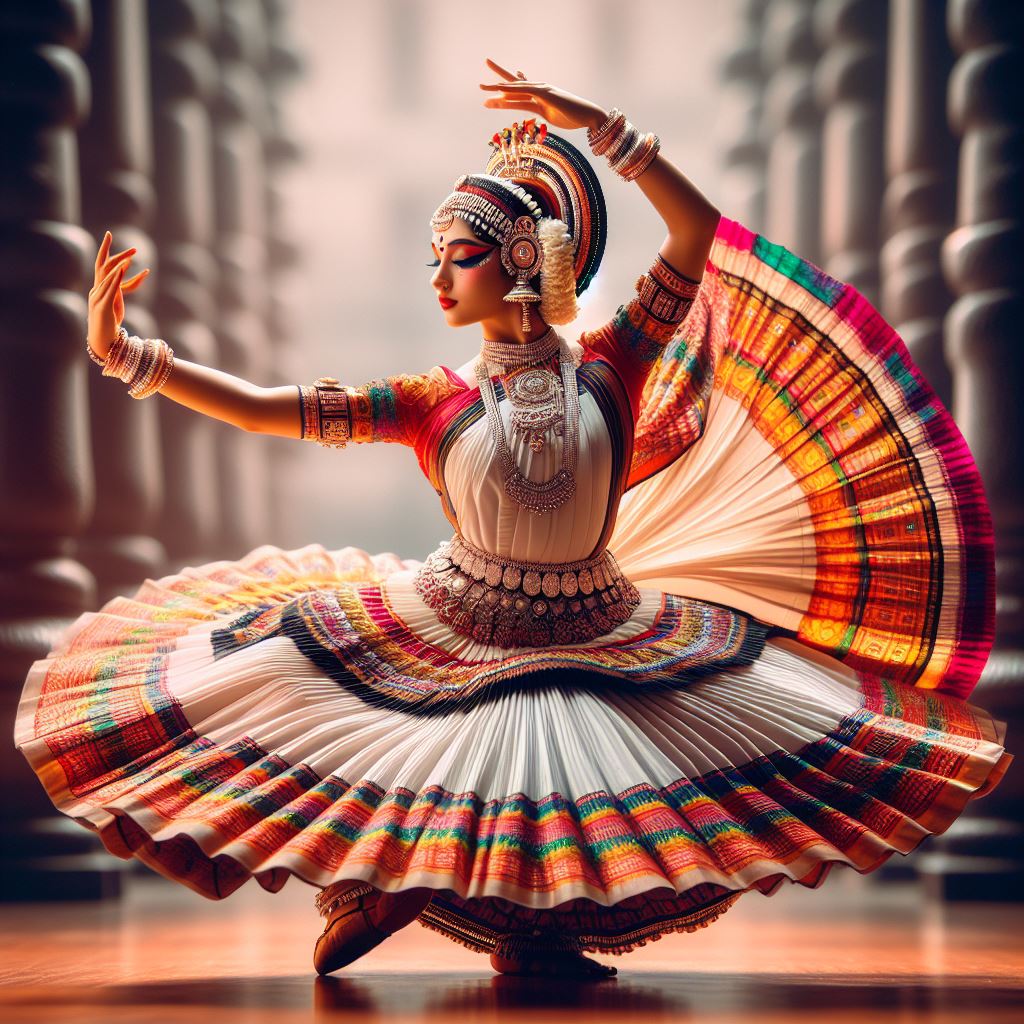Introduction:
Welcome to our exploration of Mohiniyattam, a classical dance form originating from the southern state of Kerala, India. Known for its graceful movements, expressive storytelling, and intricate footwork, Mohiniyattam is a dance form steeped in rich cultural heritage and tradition. In this blog post, we will delve into the origins, techniques, significance, and contemporary relevance of Mohiniyattam.
Origins and History:
Mohiniyattam traces its roots back to the devadasi (temple dancer) tradition of Kerala, where it was performed as a sacred offering in temples. Over time, it evolved into a refined art form, blending elements of Bharatanatyam and Kathakali, as well as local folk traditions. The name “Mohiniyattam” is derived from the word “Mohini,” referring to the enchanting form of Lord Vishnu, who is believed to have taken on the guise of a female dancer to seduce demons.
Technique and Aesthetics:
At the heart of Mohiniyattam lies its distinctive style characterized by fluid movements, gentle swaying, and subtle expressions. The dance repertoire includes a combination of pure dance (nritta) and expressive storytelling (nritya), with emphasis on lasya (graceful, feminine) elements. Mohiniyattam dancers often wear traditional white or off-white costumes adorned with gold trimmings, flowers, and jewelry, accentuating the elegance and purity of the dance form.
Themes and Narratives:
Mohiniyattam performances typically revolve around themes of love, devotion, and mythology, with dancers interpreting stories from Hindu epics such as the Ramayana and Mahabharata. Each performance is structured around a specific composition or poem, accompanied by live music featuring instruments like the mridangam, veena, and flute. Through subtle gestures, facial expressions, and eye movements, Mohiniyattam dancers bring these stories to life, evoking emotions and sentiments in the audience.
Significance and Cultural Heritage:
Mohiniyattam holds a special place in the cultural landscape of Kerala, serving as a symbol of the state’s rich artistic heritage and feminine grace. It is often performed during religious festivals, cultural events, and special occasions, showcasing the talent and skill of Kerala’s performing artists. Moreover, Mohiniyattam has gained recognition on the global stage, with performances and workshops held around the world, contributing to the promotion and preservation of Indian classical dance traditions.
Contemporary Relevance:
In the modern era, Mohiniyattam continues to evolve and adapt to changing times, with dancers experimenting with new choreographic styles, themes, and collaborations. While rooted in tradition, Mohiniyattam remains relevant and relatable to contemporary audiences, resonating with its timeless themes of love, beauty, and spirituality. Through ongoing training, education, and outreach efforts, Mohiniyattam artists are ensuring that this exquisite dance form continues to thrive and inspire future generations.
Conclusion:
In conclusion, Mohiniyattam stands as a testament to the beauty, grace, and cultural richness of Kerala’s performing arts heritage. As we celebrate the legacy of Mohiniyattam, let us continue to cherish and support this ancient dance form, ensuring that its timeless beauty and significance endure for generations to come.

